BRICOGEEK ARDUINO DESIGN CONTEST RESULTS
– September 11th, 2009

The design contest by Arduino’s distributor Bricogeek in Spain just came to an end. The results of the excellent projects that got chosen can be seen at this website. Follows the video from the winner, the project ArdunoidGPS by Albert Sanz.
You can follow the results for the whole contest at Bicogeek’s website. It contains videos, pictures, schematics, and code for all the projects. If you didn’t know how to spend next weekend, you can still run to your closest hardware store and get some gear to reproduce one of the projects.
Thanks Bricogeek for arranging this contest, we are looking forward to future editions!
GO GO EMIL GOH
– September 9th, 2009
I have got to know a lot of people during the last years, someone I will never forget is Emil Goh. When I arrived to my 3 months long residency at the Samsung Art and Design Institute in Seoul back in 2007, I happened to get to know a Malaysian designer living in a voluntary exile at the city that never sleeps. Since 2004, when he arrived to Korea for a residency at SSamzie Space, he felt in love with the big city and stayed there.
Emil’s endless curiosity brought him to one of the open laboratory sessions I was running at my lab in SADI. People would come to learn about open source hardware prototyping. He understood I was in the serious need for a guided tour to Seoul. I exchanged basic lectures in electronics for crazy dinners at non-touristic places. Personally I doubt he remembered anything of what I explained, but I will never forget every minute we spent wandering around the different neighborhoods. What he would never forget was a face or a name. He had an endless collection of friends coming from all over and he would devote all his time and attentions to the newcomers trying to make the best out of their time in Korea.
Soon we discovered we had common friends back in Europe. Educated as designer (or artist, or both) at Goldsmiths in London, he would develop his profession as educator at different universities. In Korea he worked for Hongik, in Singapore for Nanyang … as artist he was probably showing at every gallery in town … he also had some hits as designer like his lamp for hanging clothes in small rooms. Knew everybody and worked for everyone.
He was collecting pictures of the city. According to his latest report he had over 49.000 in his hard-drive. Could spend days riding his GPS-enhanced bike while taking shots of buildings, people, or just different types of kimchi. I swear I saw him photographing every single dish we ordered at restaurants. Collected all sorts of mobile phones just for the pleasure of understanding how they work. He even got an iPhone when it was not possible to use it in Korea just to play around with the UI.
Today I got the sad news from a friend in Seoul. Emil left us on September 7th. I was planning my next trip to visit him, in his last email from July he claimed for his right to get to know my 19 months old daughter, Bobbie. Unfortunately it will never happen, now. Go Go Emil Goh, wait for us wherever you go.
Update: If you happen to be in Seoul on Friday September 11th, there will be a religious service for Emil. “This Friday there will be a service for him in Seoul. 11 September 09 at the St Francis of Assisi Catholic chapel in Seoul (707-10 Hannam-2Dong, Yongsan-Gu, Seoul 140-210, Republic of Korea. Tel +82-2-793-2070).”
SOMETHING’S GOING ON IN MEXICO
– August 30th, 2009
I spent the last 10 days traveling in Mexico. I went to Tijuana, Queretaro and Mexico DF. There is quite a lot of movement around Arduino in academia, the arts, and even pre-university education. This is just a summary of a very intense week.
In Tijuana I hosted a lecture at CECUT, the local Art Center dedicated to New Media (among others). They would convoke people coming from engineering schools, and art practitioners. The girls at Protolab invited me to run an intense workshop in low-level sound production. Their model for local education and economic sustainability is remarkable, they are partly funded by the local public university, the rest of their budget comes from selling education. Finally I was invited to speak for staff and students at the National Polytechnical Institute(IPN). They run an interesting MSc. and post-graduate studies in embedded systems.
In Queretaro I was invited to visit the design department at Tecnologico de Monterrey. Their campus specializes in design, architecture, engineering, business and arts. This -private- university counts with 95.000 students all over the country and their Milemium program for families with low income will reach 100.000 more by 2015. Mexico is with no doubt a country with a big interest in alternative educational methods, since their public university system cannot absorb even 30% of the applicants.
In Mexico DF I held a mini workshop at CENART (Centro Nacional de las Artes), the equivalent to Tijuana’s CECUT but in a much bigger scale. Also, the CCEMX(Spanish Culture Center) invited me through the mediation of IKUSNET to a round table about open source and its possibilities for developing businesses in the country. There were speakers from the UAM (Metropolitan Autonomous University), OpenOffice, AMESOL, FLISOL … IKUSNET is a cooperative working with Open Source software from Spain that is specializing in migration to open source.
Here I should thank CCEMX’ director (Jesus), and CCEMX’ program responsible (Eva) for putting this agenda together and supporting it economically.
CHEAP, FAT AND OPEN
– August 25th, 2009
Jacob Remin, at CIID will present on August 27th, his Arduino-compatible sound synth. There are many projects out there aiming musicians that use Arduino’s IDE as a programming platform, but Jacob’s wins them all when it comes to the PCB’s shape. Take a look at the picture here and explore his thesis’ blog for more information and videos where he shows the system at its full power.
As for today he hasn’t published the videos using the final PCB, yet. However you can get a sneak preview to how it will be to play with it at the prototype he hand-wired using bits and pieces from a Stylophone, an LCD, some buttons, and other parts.
CIID END OF YEAR SHOW
– August 25th, 2009
It is already a year since CIID -the Copenhagen Institute for Interaction Design- opened its doors with its Pilot year. Now the participants in CIID’s first educational endeavor are presenting the outcome of their research. Here the flyer in case you are interested in visiting their show. CIID is well known for their excellent social events, if I was in Scandinavia at the opening, I would definitely go. Put August 27th in your agenda!

CIID's flyer for 2009 end of year show
From Adam to Yves21 interaction design students explore the relationship between people, society and technology.The Danish Design School and Copenhagen Institute of Interaction Design celebrate and showcase the work of Interaction Design Pilot Year students that came from ten different countries to study on this collaborative and intensive programme.Kunstindustrimuseet (Danish Museum of Art & Design)
Bredgade 68 / 1260 København KOpening August 27th (3-6pm)
Opening Hours: August 28th-September 6th (11am-5pm)
IR MULTITOUCH
– August 21st, 2009
Rob Nero, one of the MA in Interaction Design at the School of Arts and Communication, Malmö University, had the idea of using laser beams and IR sensors to develop a flat multitouch surface. It has some drawbacks, but it is 100% Arduino made, using breadboards, resistors, IR transistors, 4051 multiplex ICs, one Arduino Mini and the USB-Serial converter … 100% genuine prototype.
He is making a great collection of videos showing the functionality of it. Here one example, visit his Vimeo profile for more!
NEW LIBRARY FOLDER (AND COMPILATION PROCESS) IN ARDUINO 0017.
– August 15th, 2009
As of Arduino 0017, you can install contributed libraries into the libraries sub-directory of your sketchbook directory. Moving libraries outside of the Arduino application directory means that the libraries will stay installed when you upgrade to a new release of the Arduino software. It also means that, on the Mac, you don’t need to search around inside the new Arduino.app to install a library.
Before installing your first library, you’ll need to create the libraries directory. Then, simply unzip the library into it. When you restart Arduino, the library should appear in the Sketch > Import Library menu. Any examples for the library should show up in the Files > Examples menu.
Your sketchbook is typically stored in a directory called Arduino in your documents directory. The exact location is shown in the preferences dialog in the Arduino software.
Extra note for developers and Linux users: In Arduino 0017, libraries are no longer pre-compiled when you make a selection from the board menu. Instead, they are compiled with your sketch, like the Arduino core. This means that you don’t need to delete .o files when making changes to a library’s source code. It also means that Arduino shouldn’t write to any files in its application directory, making it easier to install on Linux. Plus, there’s no more delay when switching boards.
JULY 2009 – ALMOST 10.000.000 HITS!
– August 1st, 2009
Check this out:
| Month | Unique visitors | Number of visits | Pages | Hits | Bandwidth |
| Jan 2009 | 175062 | 382921 | 2954980 | 7397408 | 1082.14 GB |
| Feb 2009 | 187334 | 398884 | 2928090 | 7322565 | 496.97 GB |
| Mar 2009 | 225324 | 496576 | 3399466 | 8909325 | 373.80 GB |
| Apr 2009 | 222866 | 496899 | 3214105 | 8731712 | 299.79 GB |
| May 2009 | 229391 | 502417 | 3471293 | 9009623 | 303.00 GB |
| Jun 2009 | 222254 | 501348 | 3145386 | 8485584 | 291.97 GB |
| Jul 2009 | 229990 | 527109 | 3774692 | 9696172 | 339.99 GB |
These are the stats for Arduino’s website during the last months.
You can clearly see that we moved the downloads out to Google code in January/February this year, and that the traffic is stabilizing at about 300GB per month. The variables show that we are slowly moving towards the 10.000.000 hits figure … and I thought half the world was on vacation in July!
UPDATE (20090808): we got a request to show the OS breakdown of the stats, here it comes -just for the fun of it, I attached the full OS report-
| Operating Systems | ||||||||||||||||||||||||||||||||||||||||||||||||||||||||||||||||||||||||||||||||||||||||||||||||||||||||||||||||||||||||||||||||||||||||||||||||||||||||||||||||||||||||||||||||||||||||||||||||||||||||||||||||||||||||||||||||||
| ||||||||||||||||||||||||||||||||||||||||||||||||||||||||||||||||||||||||||||||||||||||||||||||||||||||||||||||||||||||||||||||||||||||||||||||||||||||||||||||||||||||||||||||||||||||||||||||||||||||||||||||||||||||||||||||||||
CAMPUS PARTY, 6000 GEEKS CANNOT BE WRONG
– August 1st, 2009
This year’s summer adventure for me was going to Campus Party in Valencia, Spain. Over 6000 technology interested users and developers meet up inside a huge tent where an 8.5 Gb connection makes sure everybody gets at least 11Mb of wired network towards the others and towards the world. Sponsored by Telefonica, the Region of Valencia (Generalitat), Nokia, Microsoft, Intel, etc. is the biggest computer-related event in Spain (and probably Europe).
Participants bring their computers from home, sleeping bags, arm-chairs, a couple of clean t-shirts, food and play, work, meet, eat, sleep in front of their terminals. There are contests in cracking the security in a server, modding your computer, making the best techy-monologue, or building the fastes line-following robot.
I ran a hack-the-TV workshop with Arduino where we started with the classic Arduino PONG for PAL TVs example from the forum, added some sound, increased the resolution, included our own typeface, and read data from an SD card. I designed a special shield just for the event and we had fun during two days with it. When I get the time in the following weeks I will clean up the code and give the credit to those that deserve it the most (specially Alastair Parkerfor his PONG code).
I got to see a lot of robots built with Arduino as intelligence and got happy to see Juguetronica (owned by Robotronica, one of our distributors) mixing up Arduino boards with some robotic toys for running their own workshops. I expect seeing much more from those people in the future, their work looks promising. You can see my collection of flickr pictures here (the guys sleeping by their PCs are priceless), but the official one may give you a much better idea what Campus Party is all about.
AND VON HIPPEL TALKED ABOUT ARDUINO
– July 30th, 2009
Eric von Hippel, at MIT’s Sloan School of Management, was interviewed byDeloitte Review on the subject of open source technologies in the field of innovation, he makes a very nice mention about Arduino:
Open hardware is a set of open platforms and tools to support people who want to design their own hardware. For example, the Arduino board is a basic electronics processing board with open specifications that anyone can copy and use in their own projects. People are proving that profitable firms can be set up around supplying hardware built to open specs.



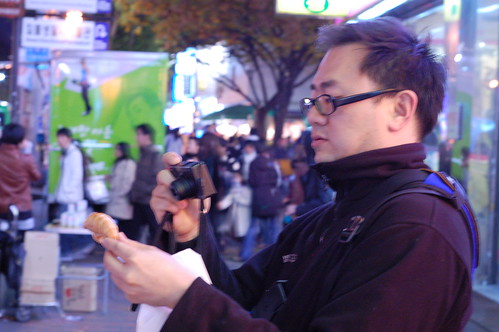
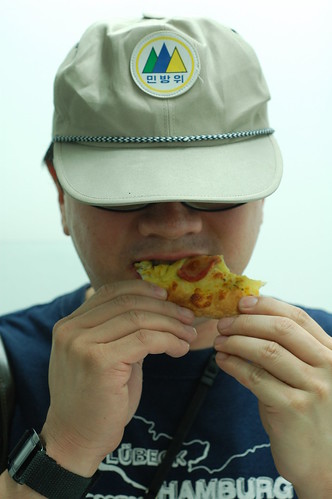
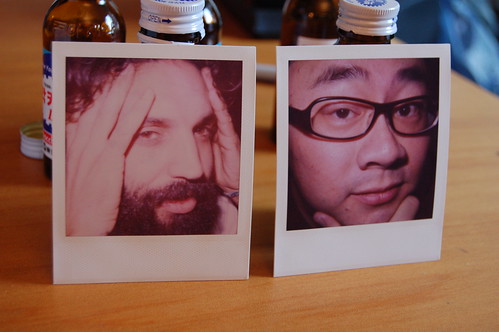
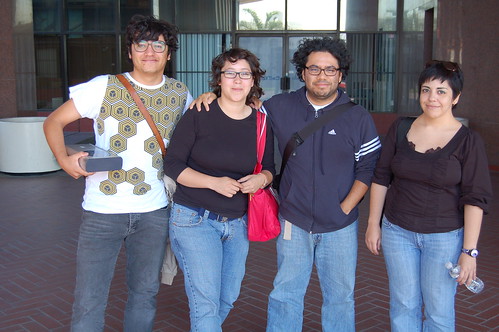
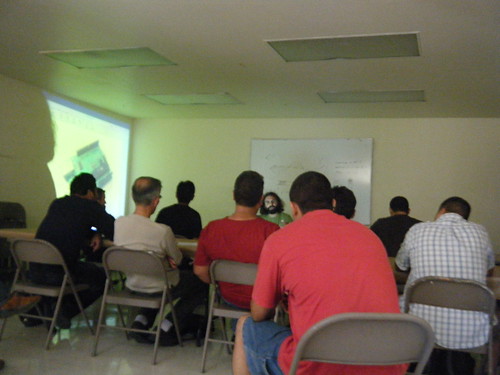
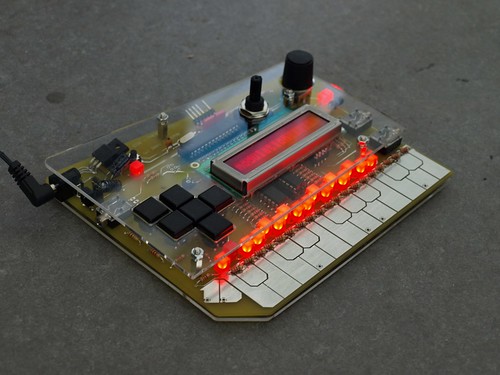







































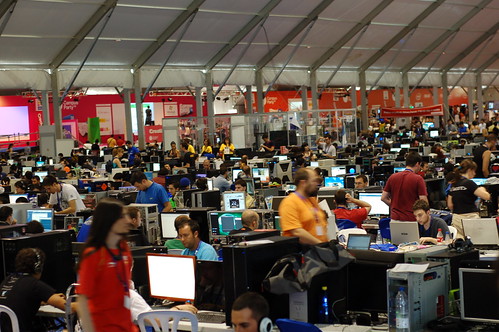

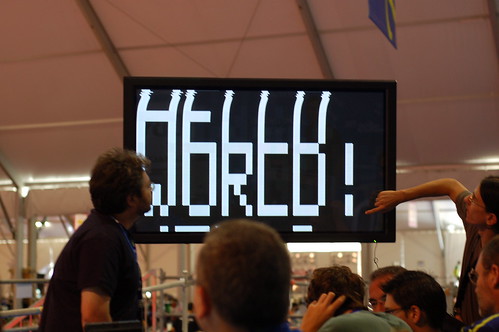
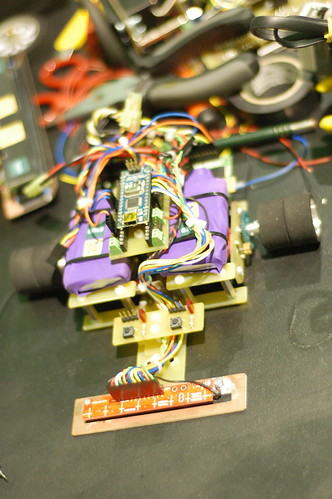






0 comentarios:
Publicar un comentario